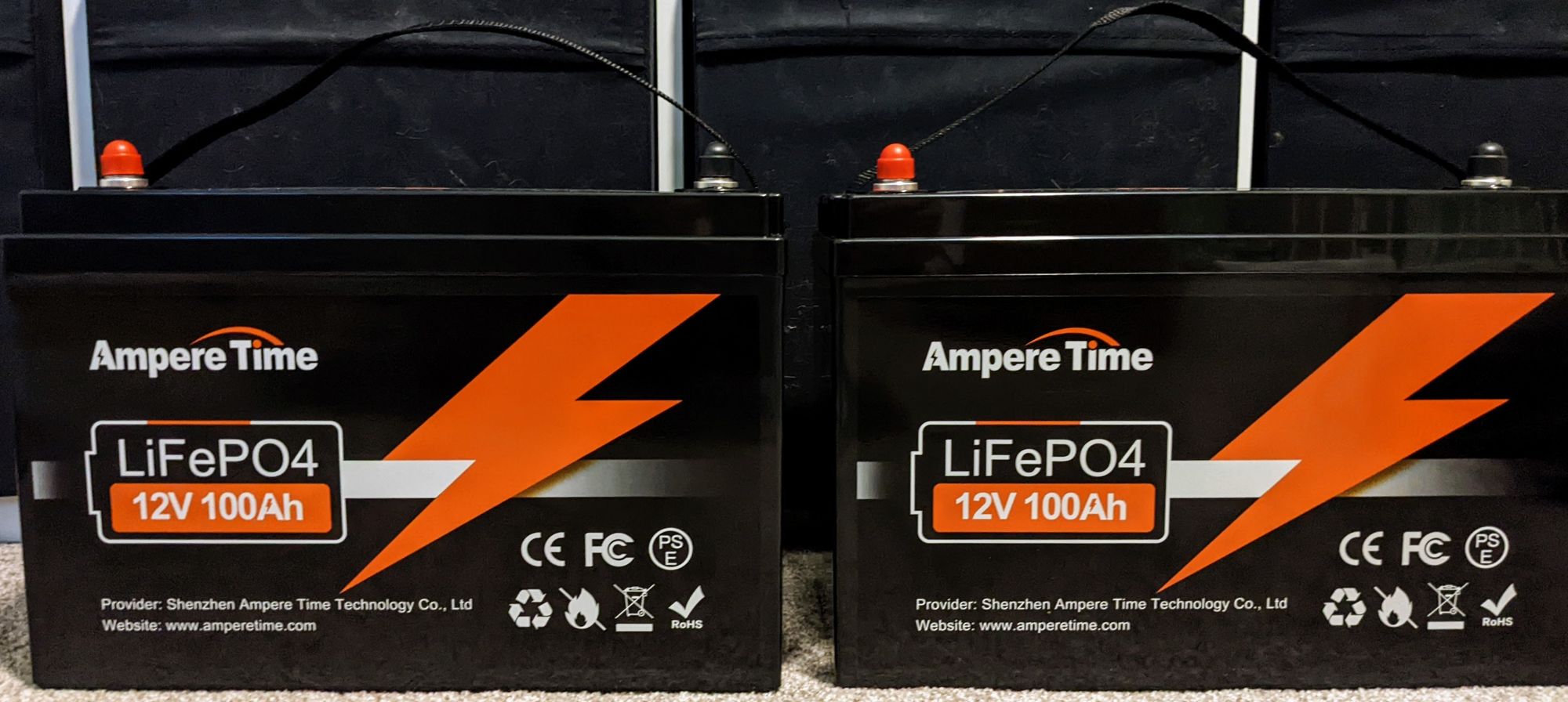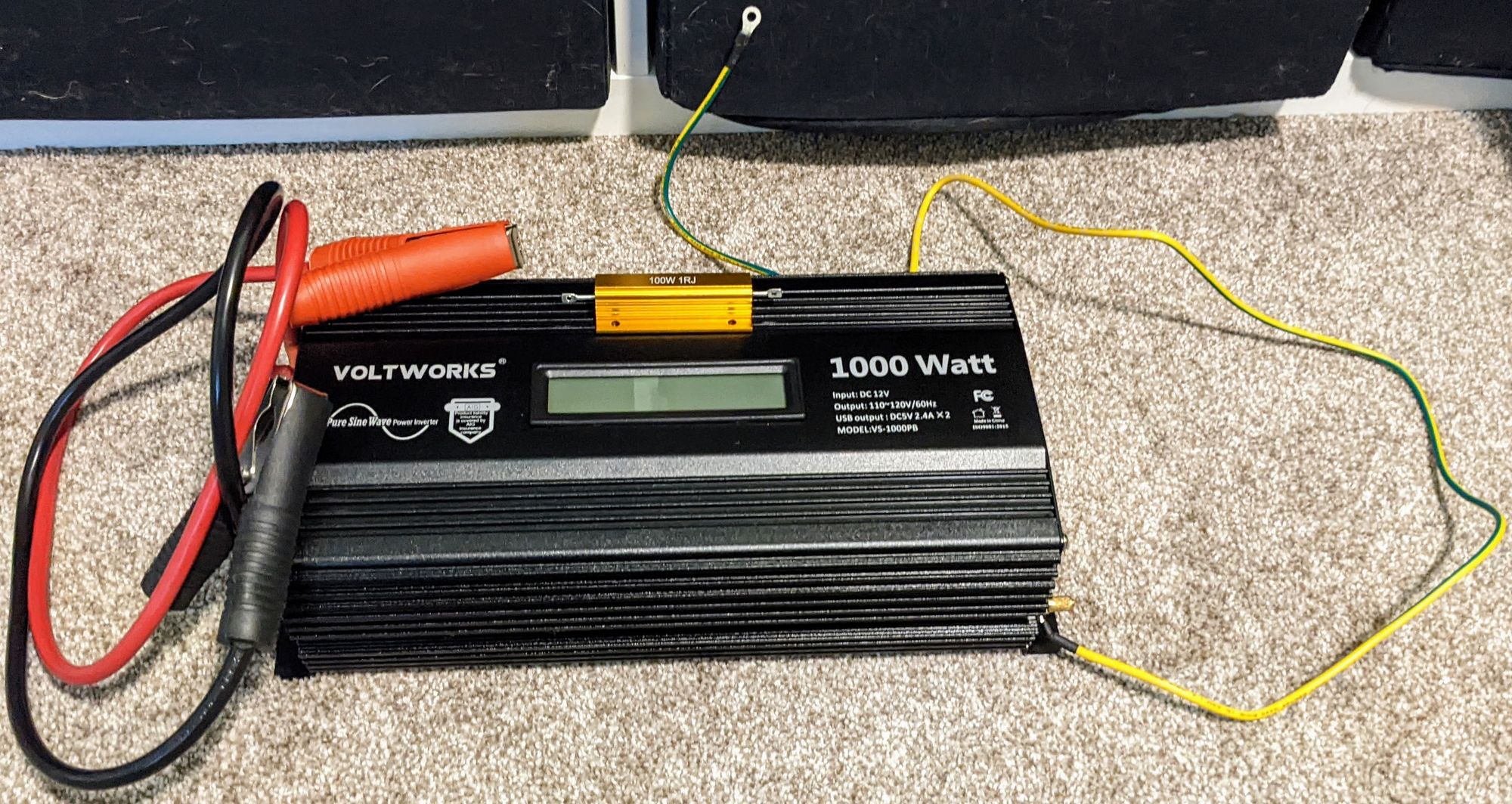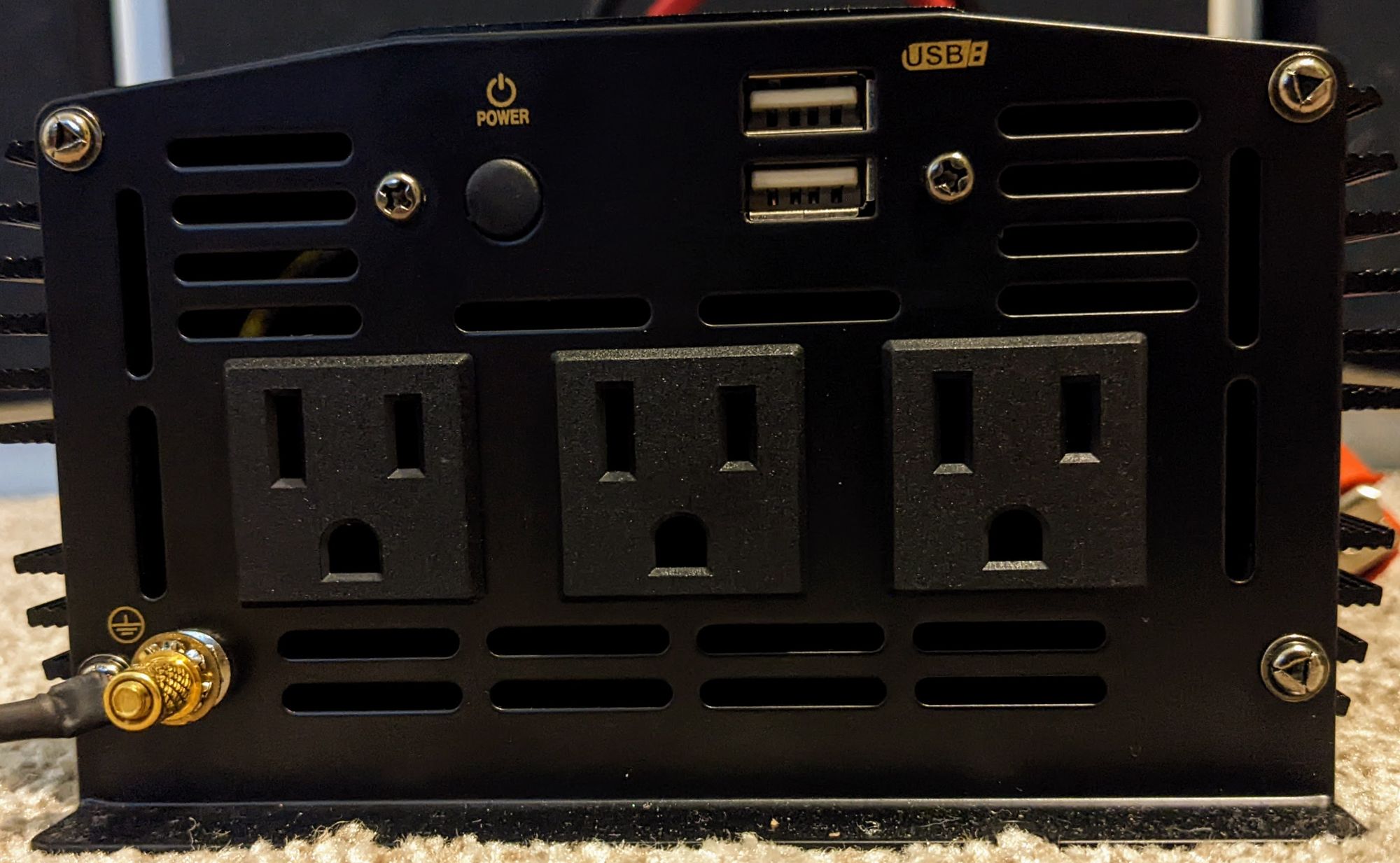Battery backup for fridge
With the instability with the power grid in the past few years, I wanted to have a plan for how to handle power being out for 24+ hours at a time. For this post, I'll focus on just keeping the fridge running.
Goals
Fridges are pretty well insulated, and they can typically keep the heat out for four hours. Longer than that, and you'll need a source of power.
The official spec on my fridge is 2 kilowatt-hours (kwh) used per day, and I measured a single day at 1.8kwh used.
Other goals are to have small amounts of power available to do things like run radios and charge cell phones. Ideally any solution would have minimal maintenance.
Possible solutions
Generators would be cheap, easy, and usually easy to find fuel. They have some downsides: getting power from outside to the fridge, noise, pollution, and getting more fuel while the gas station's power is out.
Batteries can run indoors without a problem. They have some downsides: expense, maintenance, and limited runtime.
Solar would provide plenty of power while the sun is out, but it would need batteries to keep the fridge running while the sun's down.
So any solution is going to require some combination of these technologies.
Batteries
I went with two 12 volt 100 amp-hour batteries. I wanted to be able to charge one while using the other. Each battery has a capacity of 1.28kwh, so two of them should run my fridge for about 24 hours assuming at least 70% efficiency.
I got them on a slight discount, and after taxes they cost $808

My notes on these batteries:
- They seem to be built well
- They come with an 100 amp BMS built-in
- They do not have temperature based auto-shutoff, so you have to be careful not to charge them while they're freezing
- Batteries are shipped at around 50% charge
- These batteries are restricted to only using ground shipping
- They weigh about 25 lbs each and have a handy carrying strap
Charger
I needed a way to keep the batteries charged, so I bought a 20 amp charger made for LiFePO4 batteries that runs off AC. This cost $110 after taxes.

Since the batteries were at 50%, I charged them up to full.
My notes:
- The clamp connectors get warm (over 70C) because they don't make a great connection with the battery terminal. The bad connection was responsible for dropping over 125 millivolts (mV) at 20 amps between the clamp connector and the battery terminal. After I moved the clamps around so they made better contact with posts, they were much cooler and were in the range of 75 mV drop.
- Measuring power efficiency with a kill-a-watt on the wall and a DC clamp meter, this was usually around 90% efficient. It fell to 85% at the end of the charges, when the current dropped.
- This took about 2.5 hours per battery to charge (20amps * 2.5 hours = 50 amp-hours, or half the battery capacity)
Inverter
The batteries were now fully charged and needed a way to power the fridge. This is the role of the inverter, which takes the battery DC and creates AC.

Inverters tend to have a lot of capacitance on their input, so it's recommended to limit the inrush current. Otherwise, you have a risk of creating a flying melted chunk of metal and that's an injury hazard. I'm using a 100W 1 ohm resistor (that gold colored thing in the picture) to charge up the capacitor, but even that will generate a small spark.
This cost $141 after taxes.

My notes on the inverter:
- I like the LCD display, it includes battery voltage and total wattage used
- The inverter cutoff is 9.5V, with a warning at 9.8V. The battery recommended cutoff is at 10.8V, so it would be better not to let it run till the inverter shut off
- The battery connector cables are labeled "500V 1x12 mm² pvc 105C"
- Plugging in a 18 watt fan drew 2.24 amps from the battery, which is about 61% efficient
- At 2.24 amps, the battery cables dropped 3.6 mV each, which is acceptable
- I still need to test this with a larger load, and I anticipate that it will be more efficient when more power is used
- When off, it draws about 10 milliamps from the battery
- When on with no load, it draws 350 milliamps (about 4.6 watts)
- When removed from the battery, the inverter's input capacitors hold a charge for over 24 hours. Be careful with those cables!
- It has three 110V ports, two USB 2.4 amp ports (5V only), and a grounding cable
Total cost
The total cost of this battery solution was $1059 after taxes.
Maintenance
Batteries will self-discharge over time. Commonly reported numbers for LiFePO4 self-discharge is around 3% per month. I'll need to keep an eye on that, because these batteries can be damaged if they self-discharge below their minimum voltage. Also, an empty battery is no use if the power goes out.
The manufacturer recommends to "cycle the batteries at least once every 6 months" and not to store batteries under 50% charge.
Alternatives
Instead of DIY, there are a bunch of pre-made "solar generator" products out there from vendors like Anker, Goal Zero/Yeti, Ecoflow, Jackery, and Bluetti.
They have the downside of being even more expensive. For example, the Bluetti AC200P seems to be the cheapest comparable premade option, and it has a 2000 watt-hour battery and costs $1399. That's an extra $350 (plus tax) for less capacity. Also, having two batteries is useful for charging one outside (using solar or a generator) while using the other.
What's Next
I want to eventually get solar, but I'm starting with what's the simplest thing that could possibly work.
I also want to run the fridge on these batteries for 24 hours and see what that is like.
Other links
Other people have made some interesting videos/content about batteries:
